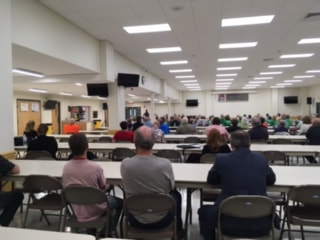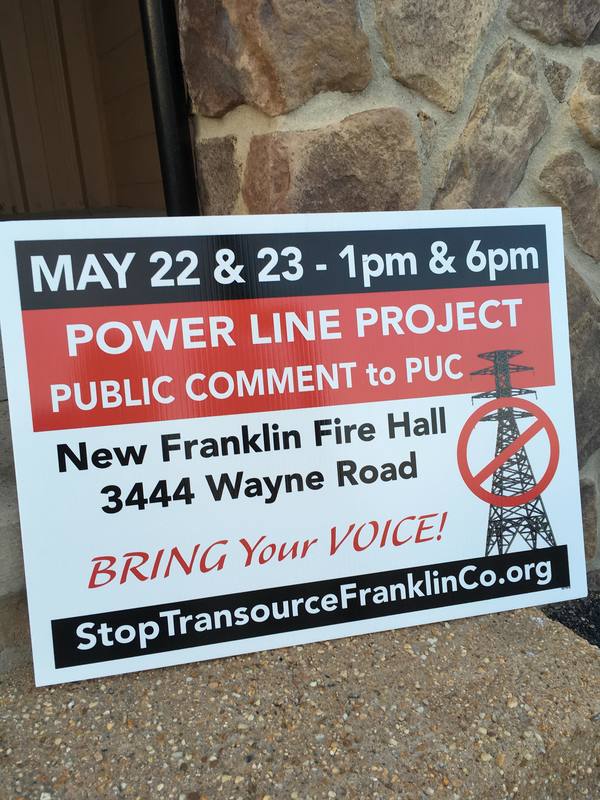So, wait, let me try to digest that again... environmentalists are using eminent domain arguments to stop clean energy projects?
Environmentalists are starting to use the same legal tactics they use to halt the construction of oil and natural gas pipelines against clean energy projects like wind farms, cutting into consumer choices for clean energy.
In Oklahoma, legal fights have slowed the rollout of critical transmission lines and wind farms that could power other parts of the United States with emissions-free electricity. Wind Catcher — a 2-gigawatt, 300,000-acre wind farm planned for the Oklahoma panhandle — had to be scrapped after oil and gas opponents began to campaign against it, stiffening the spines of property owners in the path of the mega-wind farm’s transmission lines and making the project too tortuous and risky for investors.
Now let's get to your most bogus claim -- that oil and gas opponents began to campaign against it and that "stiffened the spines" of property owners in the path of the transmission line. Who are oil and gas opponents? Do they oppose oil and gas? If they oppose oil and gas, why did they oppose Wind Catcher? Perhaps your brain overran your hand and you meant to say "oil and gas corporation-funded opponents of Wind Catcher?" Is that what you meant to imply? Either way, you're wrong. Oil and gas had NOTHING to do with landowner opposition to the transmission line. And the "spine stiffening" you speak of occurred because of the coming together into an organized group of landowners. It was landowners who inspired other landowners, not oil and gas folks. The oil and gas folks were not the cause of any landowner actions.
You must spend too much time reading baseless, self-centered lies on the internet, Bill, if you think a small group of thoughtful, committed citizens can't change the world. In fact, that's the only thing that ever has! The environmental groups and their groupies want people to think that clean energy got it's butt kicked by a well-funded, powerful industry instead of Robin Hood and his merry men, a small but dedicated group of opposing landowners. Because if affected landowners can stop "clean energy" projects from confiscating their homes and businesses, it demonstrates just how weak "clean energy" and its environmental sycophants truly are. But that's exactly what's happening... the "clean energy" charade cannot stand up to landowners protecting their land (perhaps even using eminent domain abuse legal arguments). Stop trying to steal the landowners' victory and give it to "oil and gas." Oil and gas folks were bit players nibbling around the edges of the landowner opposition trying to tap their energy to serve the oil and gas agenda. And it didn't work. And no money was given. Landowners fully funded their own legal battle, and it cost them dearly.
Here's the next untruth:
If Wind Catcher is cancelled, has that "slowed the roll out" of the project, or has it STOPPED it? It's dead and gone. And there was nothing "critical" about the transmission line or wind farm. In case you've never heard, in your long and distinguished energy journalism career, RTO/ISOs plan and order "critical" transmission lines. These would be the lines necessary to maintain reliability, or to serve an economic or public policy purpose. Southwest Power Pool did not order the Wind Catcher project. It was completely superfluous... as in not needed. Not "critical."
And who are these "investors" who ran away because Wind Catcher was too "torturous and risky"? It looks like Bill thinks the project was cancelled because investors refused to put up the money to build it. Here's what really happened... state regulators in Texas, acting in the interest of Texas electric ratepayers, denied AEP's application to add the cost of the wind farm and transmission line into rates. The regulators did this because all the risk that that Wind Catcher would end up being an additional cost, instead of a predicted savings, was being placed on the backs of ratepayers. Were ratepayers the "investors" Bill's talking about? They were the only party taking on risk for Wind Catcher.
Similarly, in Iowa, the legislature banned the use of eminent domain for high-voltage transmission lines carrying wind energy across the state into Illinois. The state government would have used eminent domain to obtain rights of way from reluctant property owners in order to build these lines.
What the Iowa legislature did not do is "ban the use of eminent domain for high-voltage transmission lines carrying wind energy across the state into Illinois." That implies that all high-voltage lines carrying wind energy are banned. Any transmission line for any purpose may still use eminent domain EXCEPT aboveground merchant projects. And there is no such thing as a high-voltage transmission line carrying wind energy anywhere. Transmission lines may not segregate or exclude electrons based on generation source. An electron is an electron. And a transmission line carries all kinds of electrons, mixed up into electric soup.
Bill is embellishing to fit his own disjointed narrative.
And then Bill invents the strawman "national anti-development forces." Whut? Who? I've never heard of these people. I'm not sure they exist. If they do exist, they're not interested in transmission or wind farms, that's for sure. Those projects are opposed by the landowners who are expected to live with them. And only a landowner is entitled to use eminent domain abuse legal arguments! Because only a landowner has standing to use an eminent domain legal argument. A national anti-development activist, an environmentalist, or an oil and gas person, does not own the land proposed to be taken by eminent domain, the landowner does. Therefore, only a landowner may use an eminent domain-focused defense.
And that's another huge problem that probably gets Bill's shorts all wadded and uncomfortable... environmentalists, anti-development activists, and oil and gas people, all pretend to be sticking up for landowner rights by covering themselves with what they feel is a popular petard... eminent domain abuse. Truth of the matter is, none of these folks actually give a damn about landowner rights. They pretend to, though, in order to attempt to siphon off the energy of landowner groups to serve their own agenda. That's because none of these people have any citizen energy of their own. They don't have a grassroots army. The best they can do is create front groups that give an appearance of grassroots support. However, purchased advocacy never performs to the level of true grassroots efforts. For example, what if I gave you $5 to pretend to be pissed off about something? You'd be acting. However, what if I smacked your momma? Bet you'd get genuinely mad for no money at all! Paid advocacy is boring, but a true grassroots movement is exhilarating, energizing, and completely rewarding. And it can't be faked.
Environmental groups who simultaneously speak out for and against landowner rights demonstrate a huge hypocrisy that is apparently confusing for Bill and The R Street Institute. While environmental groups are for eminent domain when used to take private property for "clean energy" projects, environmental groups are also against the use of eminent domain to take private property for "oil and gas" projects. So, are environmental groups for or against eminent domain? Apparently there's some other standard to be applied that makes eminent domain suddenly a great idea... if the developer of a project pretends its project is "for clean energy." But that really doesn't change the eminent domain argument at all. It just makes environmentalists the ultimate hypocrites who should be ignored.
Perhaps these are the people Bill is ranting about?
There's nothing wrong with landowners using eminent domain arguments to protect their land from energy projects of all kinds. Environmentalists and oil and gas people need to stop confusing this issue for their own purposes. Remember, only landowners have standing to use eminent domain abuse legal arguments.
And maybe Bill should re-think being done with school. Some clarity and honesty in what he writes for publication seems sorely needed.




 RSS Feed
RSS Feed